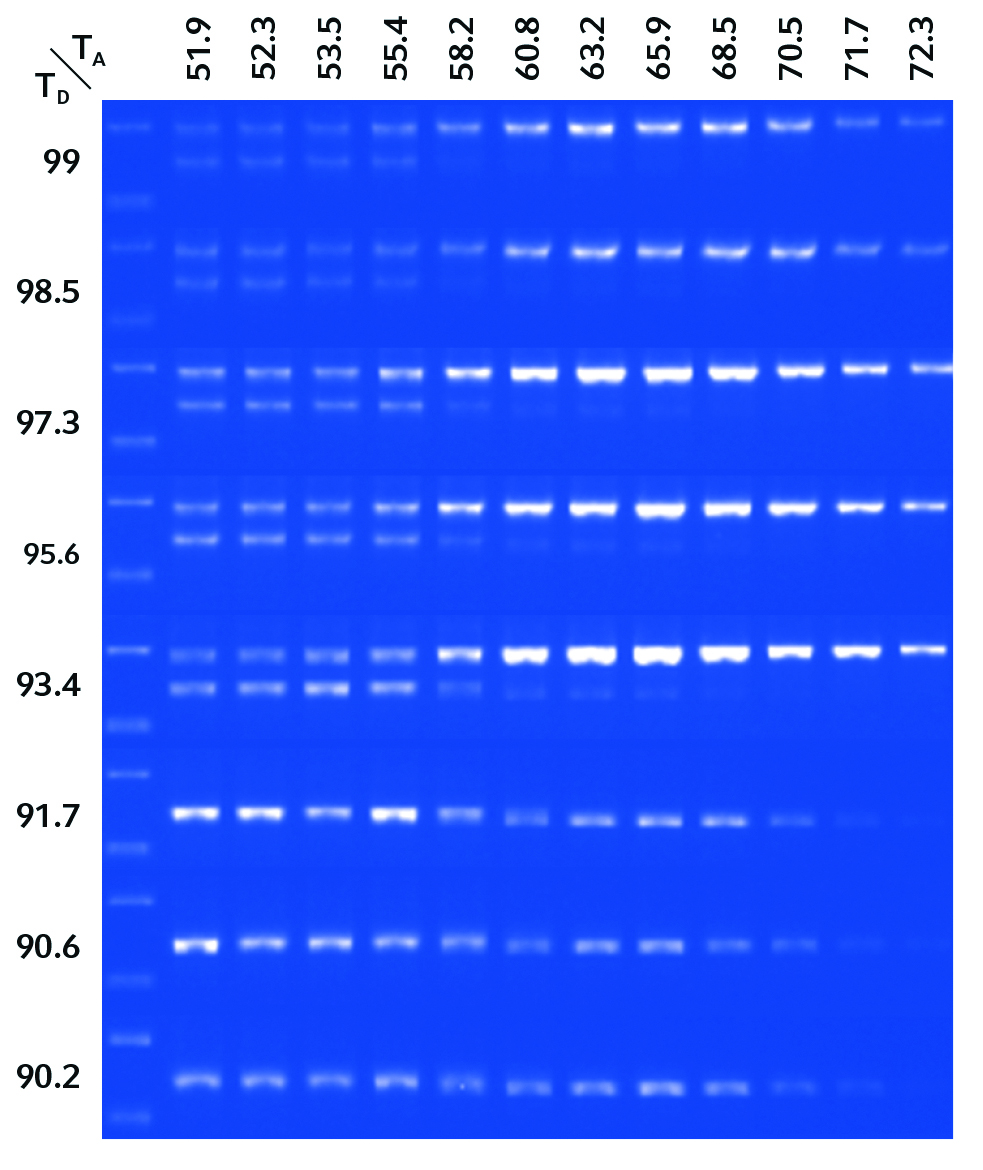Kay Korner Ph.D. Global Project Leader Eppendorf AG
Optimization of Denaturation Temperature Can Enhance PCR Assays
For decades, optimizing annealing temperatures in PCR has pushed the limits of PCR forward to more difficult tasks. At the same time, mastermixes and kits became more powerful and less prone for errors. Getting an easy PCR to work is a question of minutes or hours these days, not days or weeks. Still, more difficult PCRs do not work straight away. And even after trying a variety of different annealing temperatures, some assays just do not produce DNA in a logarithmic scale.
A well-known reason for this is PCR inhibition. A lot of substances can inhibit PCR, either by binding to the polymerase or by binding to the DNA. The latter category especially causes problems because these substances are often “copurified” (i.e., they come out of the purification process still attached to the DNA).
A not-so-well-known factor that leads to insufficient PCR product is insufficient denaturation of the DNA. Most assays are set up at 95°C for denaturation, regardless of the characteristics of the template DNA. The duration of the 95°C denaturation step might vary, but going beyond 95°C for more efficient denaturation seems to be terra incognita for the scientist.
If one knows how the denaturation process works, it is very easy to understand that template length, GC-content, or tertiary structure of the DNA can have a significant effect on the denaturation temperature needed. Going higher in denaturation temperature can be beneficial to improve the denaturation, but comes at the cost of higher thermic stress for all the biomolecules in the sample.
However, we have to keep in mind that PCR is a biological system. In a normal denaturation step, some template molecules of double-stranded DNA will separate and some will not. This can affect the efficiency of your PCR quite significantly, especially in the first cycles. Given the heterogeneity of DNA templates used in PCR, it is somewhat surprising that the majority of scientists just uses 95°C and only vary the duration of that temperature step, but not the temperature itself.
With molecular biology advancing to more and more sophisticated questions and experiments, getting the difficult PCRs to work becomes a crucial success factor. Thus, getting that bit of extra yield out of the first few cycles to get the reaction going logarithmic can be important. The right denaturation temperature seems to be a variable that has not been exploited as much as other variables in a PCR assay setup to achieve this target.
An excessively high denaturation temperature causes stress to all biomolecules. The half-time of polymerases can go down by a factor of 3–9 between 95°C and 100°C, depending on the type of enzyme. Thus, unnecessarily high temperatures should be avoided to keep the enzymes processive.
As shown in Figure 1, it seems to be the case in certain assays that yield becomes better with higher denaturation temperatures, while specificity increases with somewhat lower denaturation temperatures. In such a setup, optimization of the denaturation temperature can be used to optimize your PCR toward yield or specificity, depending on your needs. With that kind of optimization power and flexibility, assays can easily be developed toward better and more reproducible results. A temperature gradient function of your PCR cycler that allows it to be used during the denaturation step can take care of the optimization of the denaturation temperature. The latest technology even offers 2D-gradients that allow optimization of two temperatures (e.g., annealing and denaturation) in a single PCR run.
The optimization of the denaturation temperature can be an additional technique in your repertoire to get very difficult PCR assays running. If you are the person that finally gets a template amplified that no other lab managed to produce—the fame will be all yours.

Figure 1: PCR optimization of ß-actin gene, optimizing both denaturation temperature (bottom to top) and the annealing temperature (left to right). Higher denaturation temperatures can have the advantage of increased specificity, while lower denaturation temperatures reduce thermic stress on biomolecules and can lead to increased yield. Assays that struggle to work reliably at a 95°C denaturation temperature could benefit significantly from the optimization of the denaturation temperature.
Kay Koerner, Ph.D. ([email protected]), is global project leader for Eppendorf AG.



